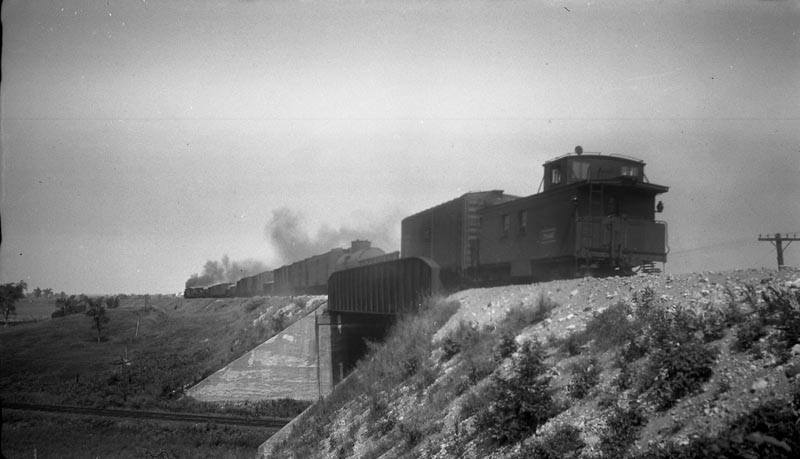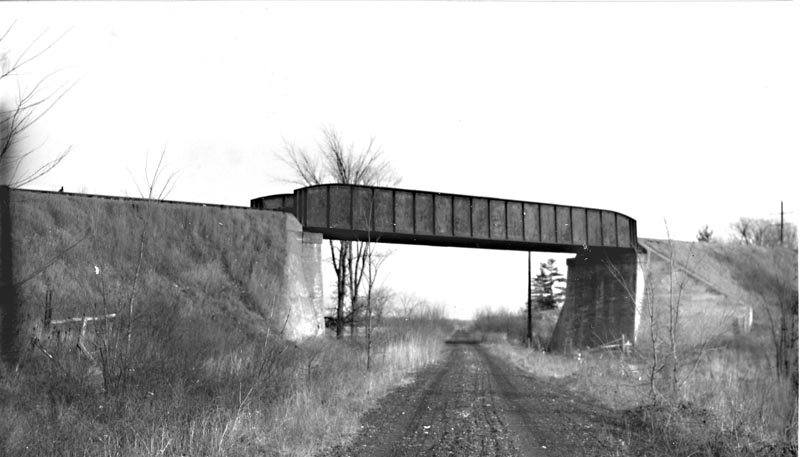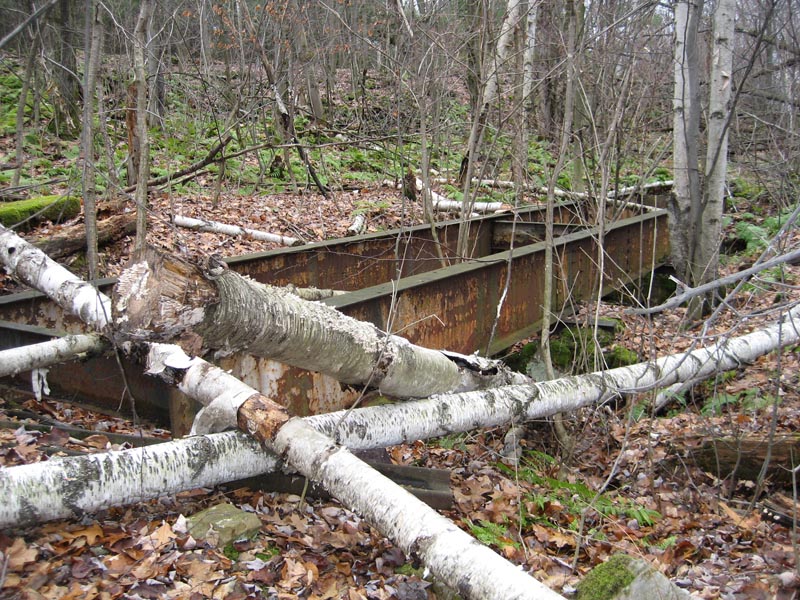Nepean Junction Mystery
Today, Ottawa Central trains going west
towards Arnprior or
Pembroke take the Beachburg subdivision from the junction with the
Walkley Line
at Wass. They cross Ottawa as far as Nepean Junction
where the
Renfrew subdivision diverges from the Beachburg line.

An early view of Nepean
Junction looking
west not long after it was opened to traffic.
This shows the Renfrew line diverging to the left and dropping down to
reach the old original alignment.
(Canadian Science and Technology Museum Mattingly
collection)
It wasn’t always like this. The first to be built was the Renfrew line
which was
opened on 18
September 1893 as part of J.R. Booth’s Ottawa,
Arnprior and Parry Sound Railway (OA&PS). The
OA&PS ran out of Ottawa
along the alignment of the present day Queensway. The
Beachburg subdivision was opened 22 years
later by the Canadian Northern Railway on 15 October 1915.
The Beachburg line crossed the Renfrew line
on an overbridge and this state of affairs continued, even after both
lines
came under the same management of Canadian National in 1923, until 28
September
1952. On that date, a new connection was
opened between the two lines, the junction was named Nepean and all
Canadian National trains were
diverted over the Beachburg subdivision. This
lead to the abandonment of the former OA&PS line
from Island Park Drive
west
to Nepean Junction and allowed for the eventual construction of the
Queensway
on much of this alignment.

This shows a
westbound freight train on the Beachburg subdivision crossing over the
Renfrew
line. The lower line was abandoned in
1952 when Nepean
Junction was laid in and all trains started to use the upper line.
(Canadian Science
and Technology Museum Mattingly collection)
So far this is a pretty straightforward story. The connection was put in as the first in a
number of stages in the relocation of the railways of Ottawa which was
funded by the National
Capital Commission. The funding might be
clue as to why it took Canadian National some 30 years to carry out
this
project which would reduce their track maintenance costs – the funding
was
provided by the NCC and not the cash-strapped railway.
 A
view of the overbridge looking east towards Ottawa just after the
lower portion had been abandoned and the rails lifted.
A
view of the overbridge looking east towards Ottawa just after the
lower portion had been abandoned and the rails lifted.

The remains of the bridge abandoned in the
bush seen
on 18 November 2006. From a rough
measurement, this is the same size as the original bridge.
Ottawa
Central Railway, Spareboard, July 2008.
Malcolm Vant writes (December 2019)
It
was Colin’s original article that led me to the spot to take more
detailed photos which we shared and then the general consensus was this
was way too light to be a railway bridge and was not the one from where
the Renfrew Sub passed under the Beachburg.
That’s when Bruce
Ballantyne and I started to look at the possibility it was used in the
nearby quarry for something. It has a bridge-like structure with cross
members tying the two side girders together all along its length and it
appeared to have "ties" bolted to the top of it as one remains. There
are pieces of rail on the ground around it.
The place it sits is on top of some rocks as though it was dragged there and there is no obvious gap it was spanning nearby.
Where and what it was used for remains a mystery
